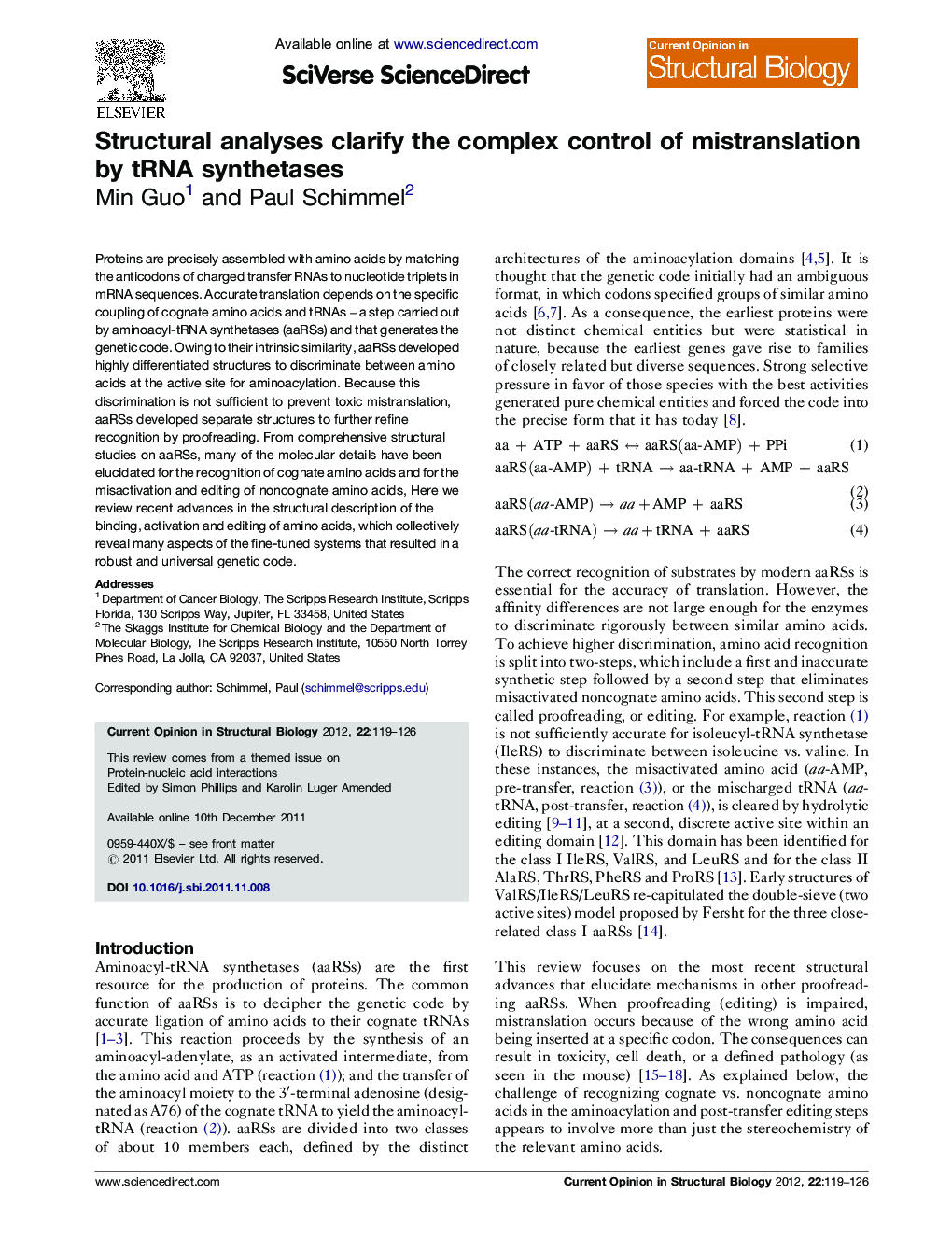| Article ID | Journal | Published Year | Pages | File Type |
|---|---|---|---|---|
| 1979225 | Current Opinion in Structural Biology | 2012 | 8 Pages |
Proteins are precisely assembled with amino acids by matching the anticodons of charged transfer RNAs to nucleotide triplets in mRNA sequences. Accurate translation depends on the specific coupling of cognate amino acids and tRNAs – a step carried out by aminoacyl-tRNA synthetases (aaRSs) and that generates the genetic code. Owing to their intrinsic similarity, aaRSs developed highly differentiated structures to discriminate between amino acids at the active site for aminoacylation. Because this discrimination is not sufficient to prevent toxic mistranslation, aaRSs developed separate structures to further refine recognition by proofreading. From comprehensive structural studies on aaRSs, many of the molecular details have been elucidated for the recognition of cognate amino acids and for the misactivation and editing of noncognate amino acids, Here we review recent advances in the structural description of the binding, activation and editing of amino acids, which collectively reveal many aspects of the fine-tuned systems that resulted in a robust and universal genetic code.
► Accurate translation depends on the specific coupling of cognate amino acids and tRNAs. ► Aminoacyl-tRNA synthetases (aaRSs) generate the genetic code. ► Evolved mechanisms for specific discrimination between cognate and noncognate amino acids retain the modern genetic code. ► Amino acid stereochemistry is not the sole determinant of a need for proofreading.
